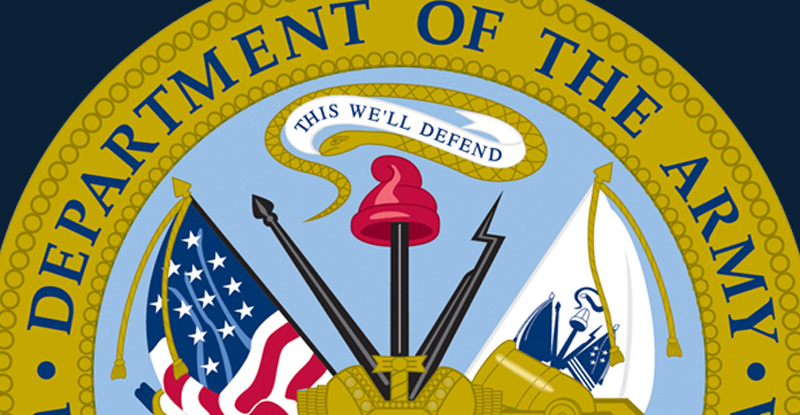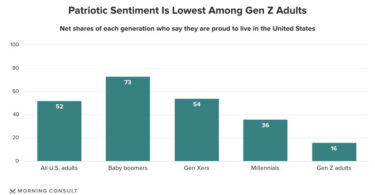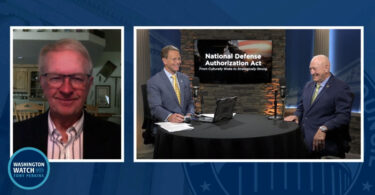The Army has launched far-reaching reforms that will transform how it attracts and recruits new soldiers, its top leaders said in a press conference today.
The moves come after the service failed to meet its recruiting targets for two consecutive fiscal years, which caused its end strength to fall from an original level of 485,000 in late 2021 to around 452,000 active duty soldiers today — its smallest full-time force since 1940, the year before the U.S. entered World War II.
Army Secretary Christine Wormuth said the changes came after an in-depth recruiting study that compared 25 years of internal Army data and organizational structure against labor market trends and private sector practices.
“What we’re doing is really focused on changing what we can control [and] seizing our own destiny,” Wormuth said.
The reforms, which will begin immediately, though some will take years to complete, will include:
- Establishing new specialized enlisted and warrant officer recruiting career fields that will replace the existing 79R MOS and eventually abolish involuntary recruiting assignments.
- Formally increasing recruiters’ mandate to woo prospective soldiers with college education, due to the shrinking proportion of workforce members who have only a high school education.
- Creating an experimentation directorate within the Recruiting Command that is isolated from current-year production pressure.
- Integrating effective data analysis to support recruiting policy decisions after the study group found the service has failed to verify whether historical changes were effective.
- Reassigning Recruiting Command to report directly to Wormuth, and raising its commanding general rank to a three-star level and extending the command tour length to four years.
- Reassigning the Army Enterprise Marketing Office to report to Recruiting Command.
, , , , (read more on Military.com)
Breaking: Understand this first to know why you are having trouble recruiting in the first place:https://t.co/sOpNJZRX3h
— STARRS (@STARRSmission) October 3, 2023
Army announces transformation of its recruiting enterprise (US Army, 3 OCT 23)
With the armed forces facing the most challenging recruiting environment in a generation, the United States Army announced a transformation of its recruiting enterprise.
During a Pentagon news conference, Secretary of the Army Christine Wormuth and Chief of Staff of the Army Randy George detailed sweeping changes in how the Army will identify and recruit talent – from expanding its focus to a larger share of the youth labor market and creating a specialized talent acquisition workforce to initiating an experimentation and learning capability.
The changes follow a detailed study of Army recruiting over the past 25 years that provided recommendations to regain competitiveness in the modern labor market.
The two leaders also announced that the Army expects to have ended FY2023 with nearly 55,000 recruiting contracts, including roughly 4,600 for the Army’s Delayed Entry Program – recruits who will ship in FY2024. As a result, the Army will meet its end-strength goal of 452,000 for active-duty Soldiers.
Both Wormuth and George praised the steadfast efforts of the recruiting workforce and credited novel efforts like the Future Soldier Prep Course, the Be All You Can Be campaign and other initiatives for the improvement, while acknowledging more work needs to be done.
“The competition for talented Americans is fierce, and it is fundamentally different than it was 50 or even 20 years ago,” said Wormuth. “Understanding that reality is key to designing new practices that will make us a more attractive and compelling career choice for young Americans.”
Secretary Wormuth and General George detailed decisions they have made to transform the Army recruiting enterprise in five key areas.
Transform how the Army prospects
Because the labor market has changed fundamentally since the inception of the All-Volunteer Force in 1973, the Army will expand its focus beyond recent high school graduates.
“While today’s high school seniors comprise more than 50 percent of our annual contracts, they represent only 15-20 percent of the larger prospect pool from which we could recruit,” Wormuth said. “This means that in addition to the high school market, we need to attract and hire Americans in the college market or those already out in the job market.”
The two leaders set a goal of at least a third of the Army’s newest soldiers to have more than a high school degree by 2028, compared to 20 percent today.
Transform the Army’s recruiting workforce
George explained that the Army developed its recruiting reforms after conducting a quantitative and qualitative analysis of some two million contracts, 1.5 million accessions, and 70,000 recruiters since 1998.
“One of the needs we identified was creating an increasingly permanent and specialized talent acquisition workforce,” he said. “This will ensure that our recruiters have the tools, talent, and training to reach prospects wherever they are.” The change will result in two new military occupational specialties for an enlisted talent acquisition specialist and a warrant officer to ensure the best recruiting subject matter expertise and leadership. A more specialized officer workforce remains under consideration.
In her remarks, Wormuth said the Army plans to prototype new recruiting platforms, improve the candidate experience, and test other methods for increasing a candidate’s knowledge of the Army experience.
Create an experimentation capability within USAREC
The Army further identified the need for an experimentation team, comprised of recruiters supported by experts in IT, data management, survey design, labor market analysis, marketing, operations and procurement.
George said that one of the challenges for Army recruiting is that its enterprise has historically prioritized meeting current year production targets at the expense of adapting to fundamental trends in the labor market.
“This has inhibited the development of new markets, methods, and technology to compete for talent,” he said. “To address this, we have decided to create an experimentation capability within USAREC that has the authorities and resources to drive innovation and, importantly, scale successful innovations across the command.”
Enhance the evidence base for recruiting policy decisions
George also noted the Army needs to improve the formal measurement and evaluation of recruiting policy decisions to better determine return on investment and more effectively allocate resources.
“To address this,” he said, “we will establish an evidence-based learning capability in the Army headquarters that will incorporate data collection and program evaluation design into accessions policy planning and implementation.”
Aligning Army recruiting leadership and structure
The two leaders also said that marketing functions and the entire recruiting enterprise will be consolidated and re-aligned as a proposed three-star command that reports directly to them and that they will expand the commander’s time in position from two- to four years.
“We need to empower our leaders with the access and time on the job they need to make an enduring impact,” Wormuth said. “Recruiting is one of the most important missions in the Army, and these changes reflect that importance,” added George.
Both Wormuth and George said the Army also needs to better convey to young Americans the value of service and the opportunities the Army presents.
“The fact is that even though it remains a challenge to attract new recruits, we are exceeding our retention goals every year,” they said. “That means that people who are in the Army by-and-large love their jobs. And that’s a message we want all young Americans to hear – that the United States Army is truly a place where you can be all that you can be.”








Leave a Comment